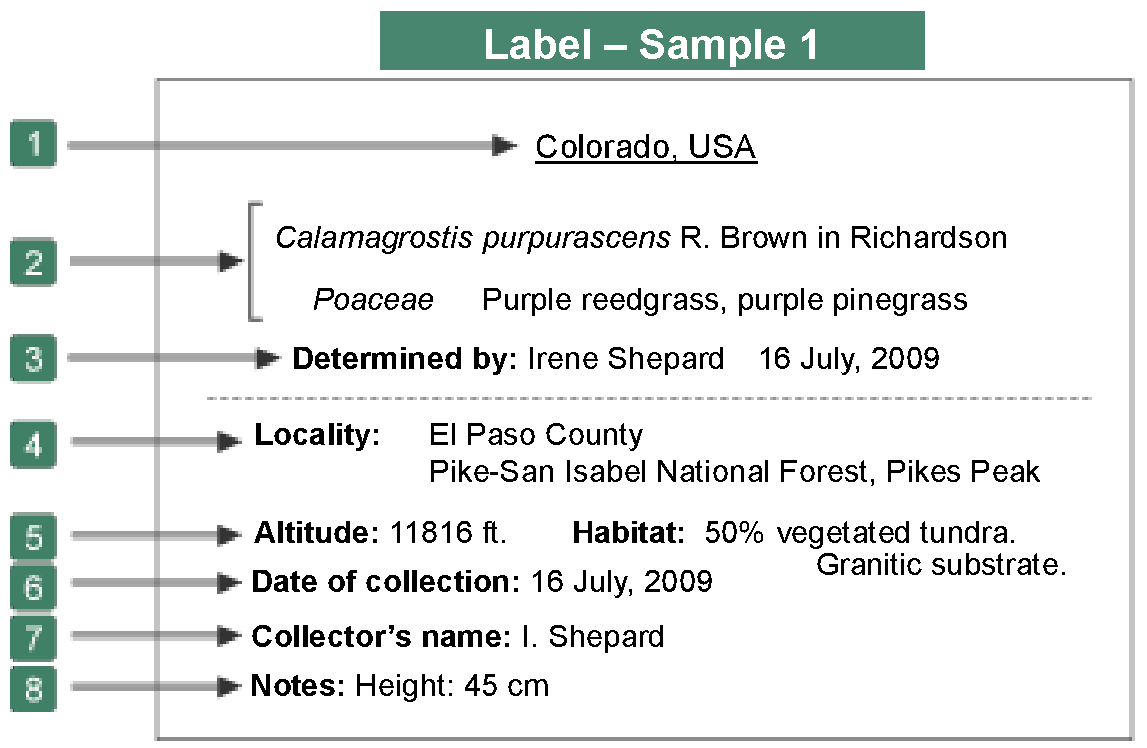Labeling
The most important item to consider when determining the academic value of a specimen is the label. If the label does not give sufficient information ? "where, when and by whom that plant was collected" ? you cannot get sufficient information from the specimen. A specimen without a label cannot be used for academic research. Even if you want to donate a specimen without a label to a herbarium, the herbarium may decline the donation.
Each person has a different way to write a label but the label must provide the minimum amount of information: “locality”, “date of collection”, “collector's name”. The typical size of a label is 3-4 in x 3.5-6 in (7-10 cm x 9-15 cm). You should use regular paper or neutral high quality paper. Write the information using durable non-fading ink.
2. Species name : Scientific or common name.
If the names are unknown, don't enter them. Someone else can find them for you or you can find them by checking in various photo reference books or with The Plant List.
3. Determined by and Date : Enter the name of the person who identified the plant (use the scientific name of the plant) and the date.
4. Locality : Enter the location (country, city, name of the mountain, river, pond, island, etc.) in detail. The place name may be changed over time, so it would be best to also record the latitude and longitude of the location. You can find the latitude and longitude by looking up the GPS data or use a map service.
5. Habitat and Altitude : Enter the type of habitat (e.g., forest, grassland, marsh, riverbank, seacoast, etc.) and the altitude. Read the altitude from a map or use an altimeter. If you cannot find the precise altitude, enter, for example, "c. 100m" or "50 ? 100m".
6. Date : Enter the date as "Apr. 15, 2014" or "15-IV-2014", so that it can be read by anyone.
7. Collector's name and specimen number : Write the collector's name.
The specimen number is used for reference and allows the collector to manage and record specimens. Each specimen may have a different number. If you make multiple specimens or duplicate specimens from one individual organism, you will need to assign the same specimen number to them.
8. Notes : When collecting a plant, include on the label additional information about the specimen such as tree height, grass height, flower color/scent, fruit color/scent, habitat characteristics (e.g., vegetation, number of individual organisms, etc.)







